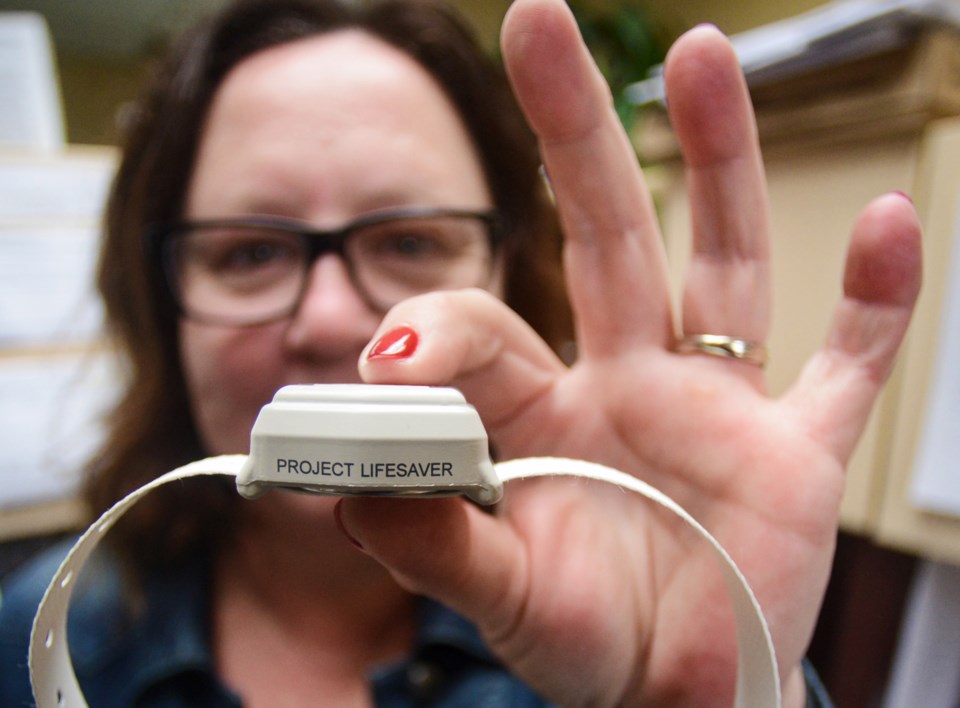For the last decade, Project Lifesaver has made life safer for people with Alzheimer’s and dementia across Wellington County with a perfect record of locating those who have wandered.
Launched in 2011, the program has seen over 200 clients in the region sign up, been deployed 26 times and successfully located all the individuals associated with the program, with an average locate time of 30 minutes.
Liz Kent, executive director of Victim Services Wellington, said the program has no downsides due to the low cost, accessibility and life-saving availabilities.
“I’ve sat with families who have had loved ones missing, and if I never have to do that again that would be okay with me,” said Kent. “It’s horrible when you have someone you love and you don’t know where they are and if they’re safe.”
Referencing a search around 2008, Kent described a search and rescue mission for an elderly gentleman that went on for 22 hours and came with a price tag of roughly half a million dollars.
Kent said that with Project Lifesaver those types of expenditures and the critical time to locate the missing individual have been drastically reduced.
Using radiofrequency, the bracelets are not intrusive and allow for police to locate the individuals more accurately than cellular technology because a radio frequency is reliable in all areas.
“There is no downside, the caregivers are given peace of mind that the loved ones are wearing a piece of equipment that will locate them faster if they go missing, the police are saving money because they are not spending hours and hours searching for someone, it speeds up the process of finding someone."
The savings also extend to hospitals ad the missing persons are able to be located so much quicker, the need for medical attention due to exposure to elements and dehydration is drastically reduced.
All this comes with the price tag of $400 to lease the transmitter and an additional yearly cost of $60 to swap out the batteries.
If the price point seems a bit steep, Kent said the Lion’s Club in the Rockwood area has aided in covering the cost.
“We have not said 'no' to anyone who couldn't afford it, we have always provided the transmitter to people, even if they couldn't afford it,” said Kent.
As a bonus, the transmitter will be replaced free of charge should it break.
Using the 10 years of knowledge, Victim Services Wellington has extended their capabilities into an education role for other municipalities that are looking to implement the service.
“One of the really neat things is we have been able to help other jurisdictions and get them to implement it,” said Kent. “Halton Regional Police came to us and researched the program we did because they had a woman who had gone missing and before they found her she was deceased, so they saw the program and wanted to do something.”
Another municipality Victim Services Wellington has aided, among others, is Barrie.
More information can be found by calling Victim Services Wellington at 519-824-1212 ext. 7205.


.png;w=120;h=80;mode=crop)
